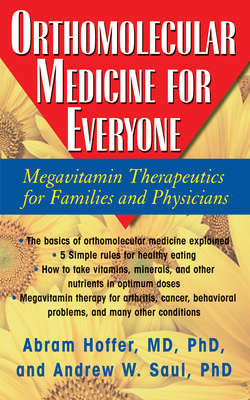Читать книгу Orthomolecular Medicine for Everyone - Abram Hoffer M.D. Ph.D. - Страница 29
TECHNOLOGY TO THE RESCUE?
ОглавлениеTechnology can be used in two ways. It can be used as it has been in Western society to enhance the palatability of food—to make it colorful, tasteful, easily served, and stable for long storage while more or less ignoring its nutritional quality. Or it may be used to improve the quality of natural foods by skillful preparatory techniques. The undesirable techniques have been amply described and documented. Examples of the beneficial technological methods are less well known.
The preparation of corn (maize) by the alkali-processing technique was known for at least 2,000 years. Corn, as prepared by most people, is an inadequate food, and heavy reliance upon it as a main food was responsible for the pandemic of pellagra in the United States until vitamin B3 was added to wheat products in the 1940s. Tortillas are a food made from corn cooked with alkali. Rats and pigs fed on tortillas are healthier than those fed with ordinary corn. Tortillas in Central America are made by heating dried corn to almost boiling in a 50 percent solution of lime in water for 30 to 50 minutes. It is then cooled, the solution remaining is poured off, and the treated corn is washed thoroughly and drained. It is then ground finely and cooked into pancakes. Apparently this process increases the availability of some of the essential amino acids, increases the ratio of isoleucine to leucine, and increases the availability of vitamin B3, which in corn is almost unavailable otherwise. People living on tortillas are, therefore, less apt to develop pellagra.
Researchers have concluded that people who had not discovered this method of preparing corn would be more apt to suffer malnutrition. A careful examination of fifty-one societies proved that corn remained a major source of food only for those societies that were using the alkali-preparing method. Seven societies were high consumers and cultivators of corn and used the alkali technique, while none of the twelve societies that were both low cultivators and consumers used alkali. Researchers concluded that maize became an extensive part of the diet only when alkali cooking techniques were used. This practice developed at least by the year 100 B.C. and lime soaking pots were already in use then at Teotihuacán, the first urban center in Mesoamerica.
Over the centuries, people who adopted the alkali process must have been dimly aware that they felt better or that they were healthier, and they associated this improved health with the new way of preparing corn. Later, the technique would become part of the cultural tradition or would even be given religious value. Once the technique became generally used, it would in an evolutionary way produce a superior race of people biologically. The alkali users must have gradually displaced those who, either through ignorance or due to opposing views, did not follow such a technique.
The best recent example of using modern technology to improve food originated during World War II, when enrichment of flour was brought into general use. It was generally conceded that whole-wheat flour was more nutritious than white flour, but for many reasons whole-wheat bread was not generally available or used. Perhaps only 10 percent of the population used whole-wheat bread. It was agreed in 1941 that the addition of small quantities of thiamine (vitamin B1), riboflavin (B2), and niacinamide (B3) to white flour would restore some of the nutrient loss resulting from the milling process. In 1961, Dr. Norman Joliffe was honored by the American Bakers Association and the American Institute of Baking; both groups concluded that the introduction of enrichment was a major event in the history of nutrition because it not only contributed to making the people of the United States stronger and healthier, but it also marked a great new step forward in preventive medicine.
Certainly it has decreased the prevalence of pellagra, but it is also true that the enrichment program developed over sixty years ago is not necessarily the best one, and that it could have been much improved by paying more attention to recent developments in nutrition. However, no amount enrichment would be as good as going back to the original whole-grain product. In other words, the white flour would have to be enriched not only with all the vitamins that have been removed, but also with the minerals and with the fibrous part of the kernel that has been removed. Ironically, the situation seems quite different today, with the official medical societies opposing the use of vitamin tablets by the general population, probably spurred, aided, and abetted by the U.S. Food and Drug Administration.
